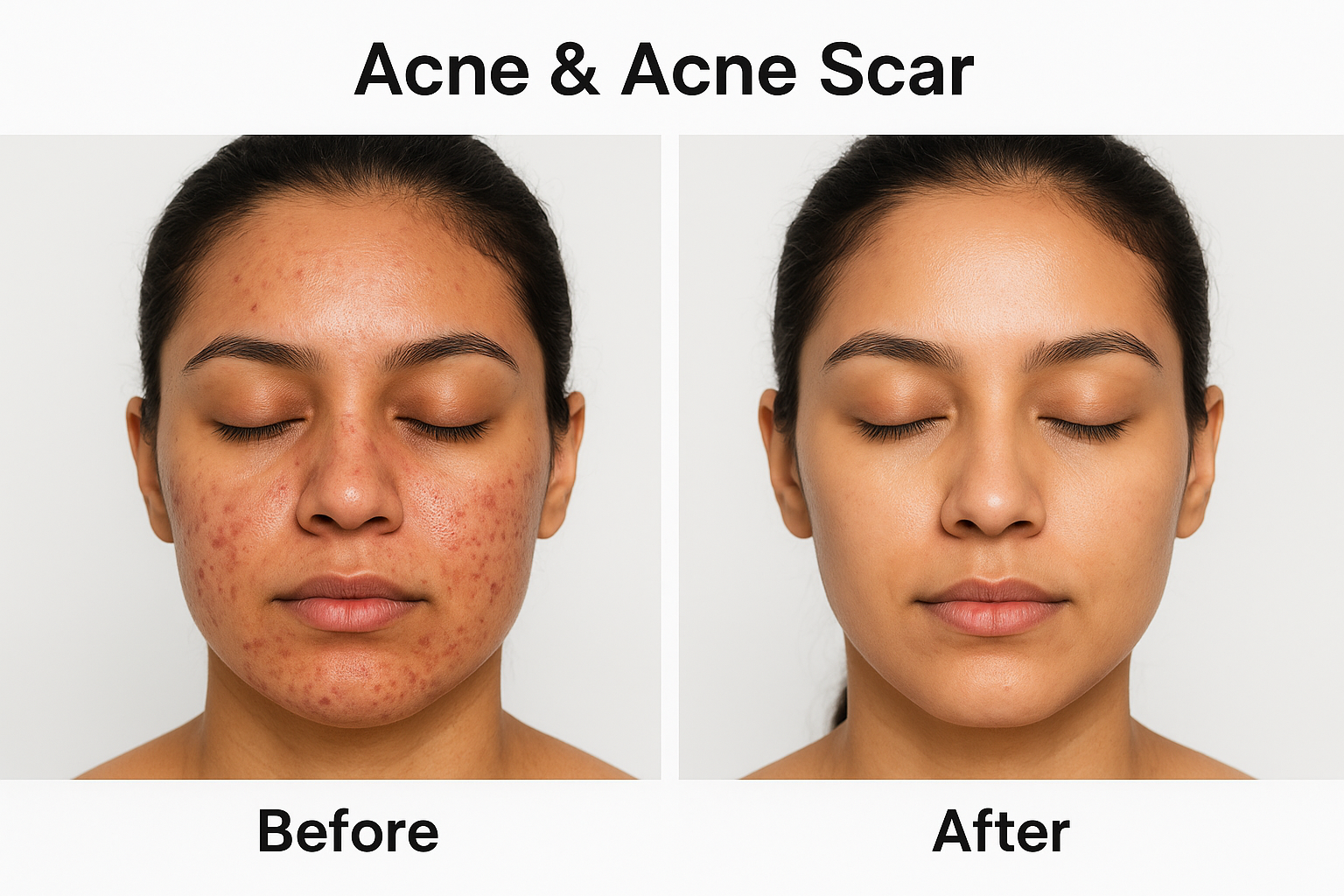
Acne is one of the most common skin concerns worldwide and can have a deep emotional
impact. While it often begins in the teenage years, adults of all ages can also be affected.
Acne doesn’t develop only because of oily skin. Hormonal changes, genetics, stress, and
even lifestyle factors can trigger breakouts. It can show up as:
The good news is that acne can be managed effectively. With the right combination of
topical creams, oral medicines, advanced procedures like chemical peels, and other
dermatology treatments, both the skin and confidence can be restored.
Sometimes, even after acne clears, it leaves behind scars. These scars form when the body
tries to repair the skin after inflammation. Unfortunately, this healing process can leave
lasting marks on both the skin and a person’s self-esteem.
Types of Acne Scars
1. Atrophic Scars – These are small pits or depressions caused by loss of collagen in the
skin. They usually need treatments that help rebuild skin structure.
2. Hypertrophic Scars – Raised, thickened scars that appear due to excess collagen
production after severe breakouts.
3. Pigmented Scars – Dark spots or reddish marks left after acne heals, also called post-
inflammatory hyperpigmentation.
Early and tailored treatment is the key—not only to stop new acne but also to prevent scars
from forming. At skdurmiqe, we use the latest technology and a comprehensive
approach to reduce acne and smoothen scars, helping patients achieve clearer, healthier-
looking skin.
SK DURMIQE B 56 SEC 88 GREATER FARIDABAD
NAMAN SKIN HAIR AND LASER CLINIC 5J/101 KC Road Faridabad